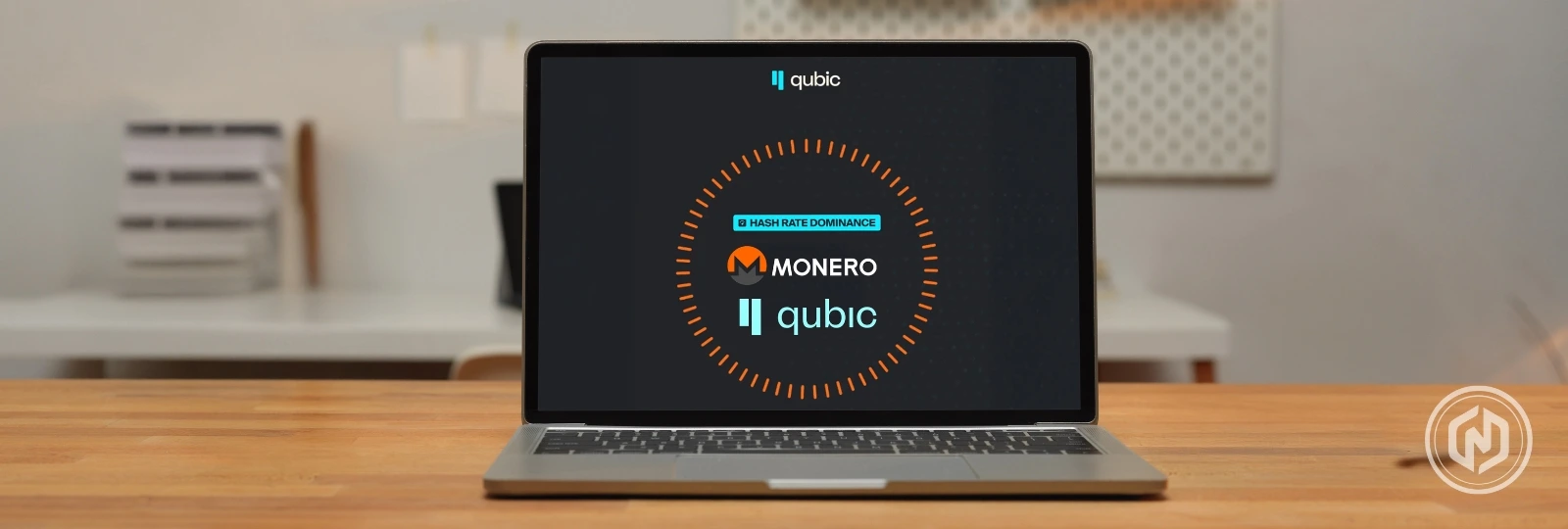- Qubic Crypto gains 51% Monero hashrate, sparking major security concerns.
- Monero community debates if incident was attack or stress test.
- Blockchain experts warn concentrated mining power risks network stability.
Qubic Crypto has declared it achieved majority control over Monero’s network hashrate, triggering heightened debate across the cryptocurrency community. The layer-1 blockchain project, founded by former IOTA co-founder Sergey Ivancheglo, announced Monday it had reached 51% control after a month-long technical effort.
This milestone coincided with a six-block-deep chain reorganization, discarding 60 previously validated blocks, according to Monero’s Consensus Status dashboard.
Qubic Crypto Claims Hashrate Dominance
Ivancheglo, known in the crypto world as “Come-from-Beyond,” stated on X that Qubic had surpassed the critical 51% threshold. This level of control grants the ability to reorganize the blockchain, censor transactions, and potentially execute double-spend attacks.
Qubic has reached over 51% of Monero’s hashrate, effectively giving it control of the network.
Qubic chose not to launch the takeover yet, proving a powerful theory by action.
But this story isn’t over yet. What’s next for Qubic and the future of PoW chains?
Article below⏬ pic.twitter.com/JqQNqpy95j
— Qubic (@_Qubic_) August 12, 2025
While Qubic Crypto has portrayed the move as a stress test for Monero’s resilience, the event has alarmed both investors and developers. Monero’s price initially has surged byuuu 5% following the market recovery over the past 24-hours.
The project operates on a “useful proof-of-work” model, channeling mining resources into artificial intelligence tasks. In late June, Qubic began incentivizing CPU-based Monero mining through its network, using the proceeds to fund buybacks and token burns within its ecosystem.
Ivancheglo had previously admitted that his network intended to reject blocks from competing Monero pools once a majority share of the hashrate was secured.
Community Response And Security Concerns
The Monero community quickly responded to what it viewed as an economic and technical assault. In late July, reports surfaced of a distributed denial-of-service attack targeting Qubic Token’s mining pool, briefly reducing its hashrate from 2.6 gigahashes per second to 0.8 GH/s. Nonetheless, Qubic Coin persisted with its momentum and that led to the reorganization that has recently happened.
“In theory, the Qubic mining pool can now rewrite the blockchain, achieve double-spending, and censor any transactions… Relevant platforms should be aware of potential threats and stay vigilant.” Zhong Chenming, Co-founder, SlowMist.
Security experts have raised their eyebrows concerning the implications. Zhong Chenming, the co-founder of blockchain security company SlowMist further warned that Qubic can now practically rewrite blocks, a fact that could jeopardize the reliability of Monero. Others remain skeptical of labeling the incident a definitive 51% attack, pointing out that chain reorganizations of this depth can occur through unusual mining luck.
Divided Opinions On Attack Legitimacy
Luke Parker, head developer on the decentralized exchange SeraiDEX, stressed that there was no strong evidence that Qubic Crypto had been put under control because of a deliberate unfriendly attack. The uncertainty has had the Monero community divided as to whether the occurrence is an exploit or stress scenario.
Beyond its interpretation, the event has increased the debate on the aspect of blockchain governance, decentralization, and issues of centralized mining conglomeration. As Qubic Crypto dares to test the network stability of Monero, stakeholders are trading on possible changes in the protocols to curb any weaknesses in future.
At this point, the privacy cryptocurrency is under the glaring scrutiny of the eyes of the community as it continues to face uncertain security terrain that has been manifested by one of the strongest fights it has ever endured.



